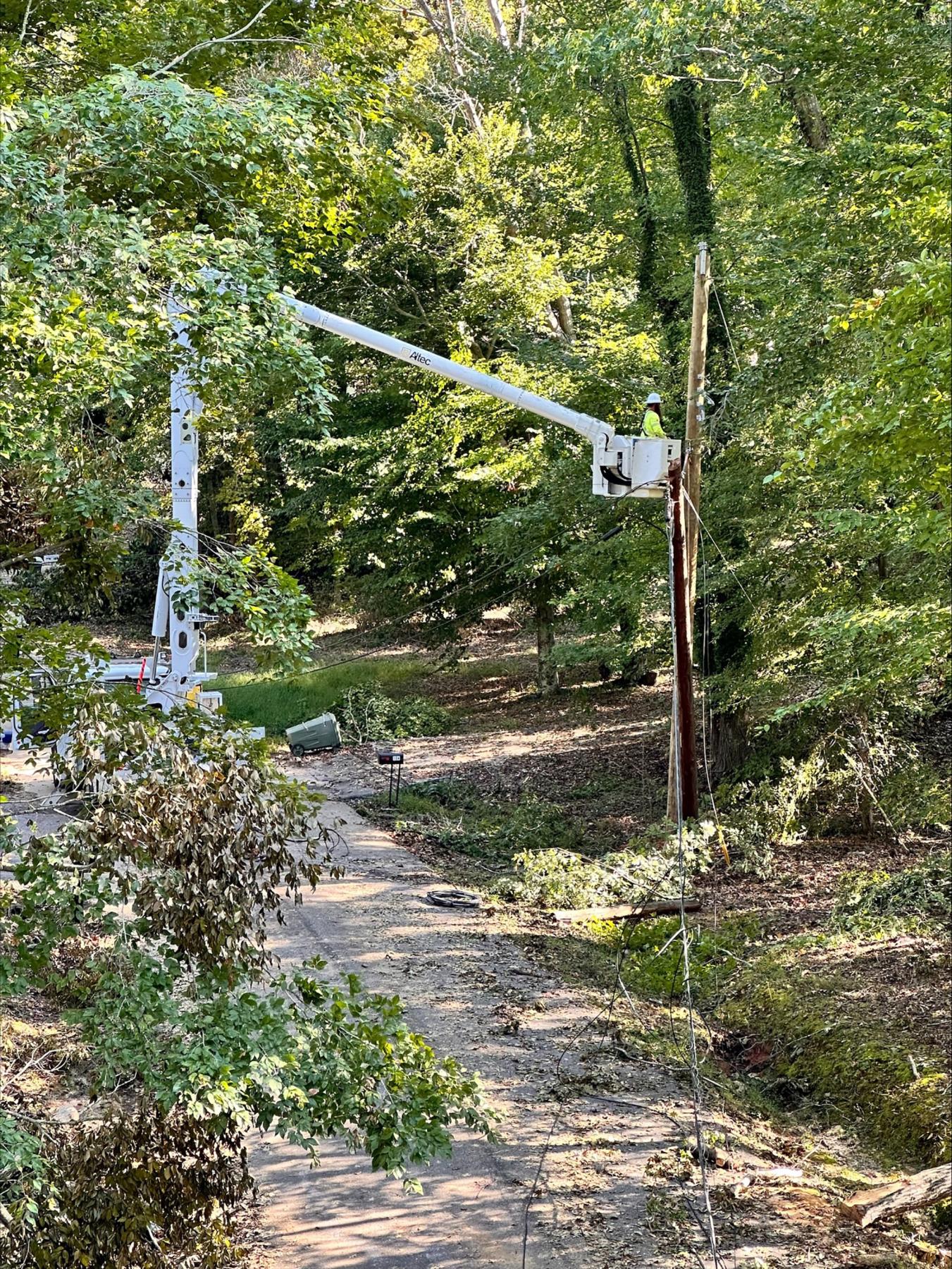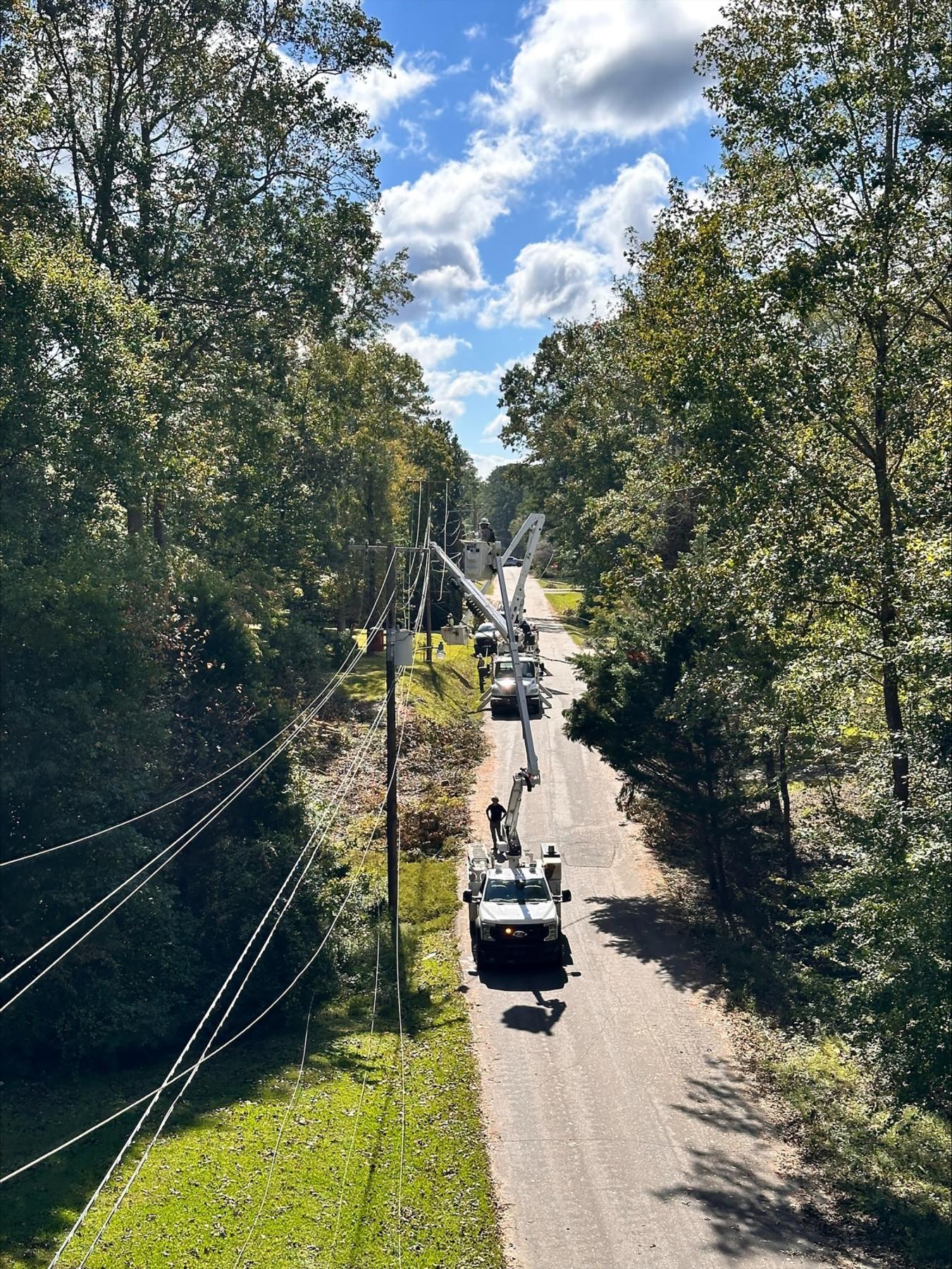With fallen trees taking out power lines across a broad path, Hurricane Helene’s passage through South Carolina on September 26, 2024, caused unusually widespread power outages. Among the municipalities with electric utilities, line workers were joined by mutual aid assistance from across the state, thanks to the SC Association of Municipal Power Systems to get the power back on.
Helene’s destruction came far inland even though the storm had declined from its peak as a Category 4 hurricane to a tropical storm as it moved from the Gulf of Mexico to South Carolina and beyond. The strongest peak wind gusts in the state — greater than 100 miles per hour — were recorded in McCormick and Edgefield counties, according to the National Weather Service, with 21 tornadoes confirmed.
Peak rainfall from the tropical cyclone was also the third highest in the state’s history: 21.66 inches, recorded in the Rocky Bottom community of Pickens County. The two higher amounts have occurred close to the coast in recent years: 23.68 inches in Loris during Hurricane Florence in 2018, and 22.02 inches in Moncks Corner during Hurricane Debby in August 2024.
These conditions wreaked havoc on the state’s electrical grid. South Carolina recorded 1.36 million electrical customers without power on September 27. Among SCAMPS members, there were around 103,000 customers without power.
Of the 21 cities with electric utilities, 14 requested mutual aid. A total of 62 utilities from 12 states provided mutual aid, from places as far away as Michigan, Missouri and Massachusetts. A total of 343 personnel contributed to the recovery effort.


Crews from Rock Hill assisted the City of Union with power restoration after Hurricane Helene.
Photos: City of Rock Hill.
Abbeville Public Utilities staff, for example, faced 115 hours of work from linemen and staff to restore power to customers, said Tim Hall, Director of Public Utilities. He noted that mutual aid served as a critical resource for the state’s electric cities “in times of need.”
“The coordination provided by the SCAMPS mutual aid program and help from Santee Cooper provided an additional 50 lineman and needed resources to Abbeville that greatly expedited the effort. In short, a miracle was accomplished within the course of a week,” he said.
Greenwood Commissioners of Public Works General Manager Jeff Meredith also expressed gratitude for the coordination and resources made possible through SCAMPS.
Greenwood CPW workers were joined by seven utilities from six states, working “almost non-stop to restore power to our customers,” he said.
“Without the dedication of our workforce, we would not have been able to restore power to the majority of our customers within a week to 10 days,” Meredith said. “All customers that could be connected were connected within 16 days. The contribution from mutual aid cannot be understated. Without the additional line workers, the restoration process would have taken much longer to accomplish. As always, we are grateful for Jimmy Bagley and Mike Jolly for ensuring that we had all the help we needed at such a critical time.”
Jimmy Bagley, Rock Hill’s deputy city manager, and Mike Jolly, Rock Hill’s director of electric utilities, oversee the SCAMPS mutual aid program and coordinate out-of-state assistance.
South Carolina’s electric cities restored power to 60% of all customers within three days of the storm, and to 97% of customers within two weeks, according to data gathered by SCAMPS.
The SC Association of Municipal Power Systems was initially established to provide mutual aid among power utilities during disasters, and it also provides legislative advocacy and training.
